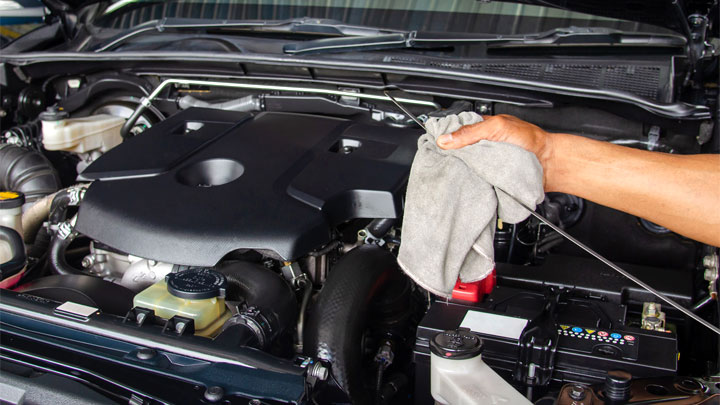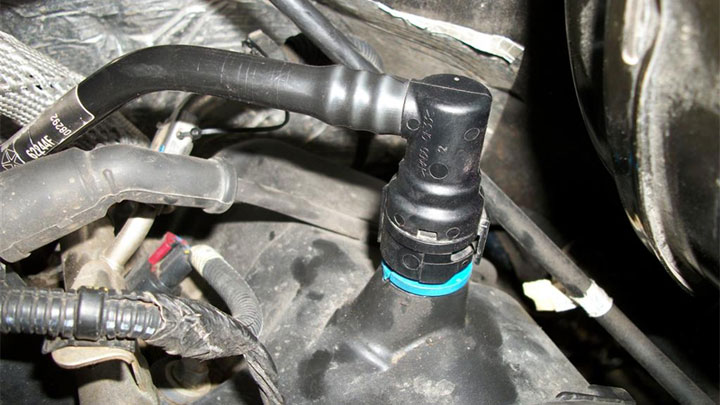Losing Oil But Don’t See a Leak? (How to Troubleshoot)
Losing oil without a trace is one of the most frustrating problems a vehicle owner can face. You’ve checked the ground expecting to find a puddle, but there’s nothing there. It’s as if the oil vanished into thin air!
So where did the oil go? What follows is a comprehensive guide to oil consumption, which details everything you might need to know when your vehicle is losing oil, with no identifiable leaks.

Read Also: Losing Coolant But No Visible Leaks? (Here’s Why)
Is Some Oil Loss Normal?
At some point in every vehicle’s service life, oil consumption will occur. This is especially true of high mileage vehicles that have logged a significant amount of wear and tear.
However, in most cases, this oil consumption is nominal, meaning that it should be so minor that it should go largely unnoticed.
The difference, and overall point of concern, comes when oil loss or consumption becomes significant enough that you must top off your engine oil in between changes. The more oil that must be added, and the greater frequency with which these additions are made, determines the severity of the situation at hand.

Causes of Oil Loss When There’s No Visible Leak
As we have discussed above, oil loss without any sign of an external oil leak points strongly to oil consumption. This term describes the burning of oil during the combustion process or the mixing of oil with other automotive fluids.
Here are several of the most common causes of oil loss, without visual indication of a leak.
#1 – Worn Valve Seals/Guides
Valve seals prevent oil from an engine’s cylinder from entering a combustion chamber, during valve actuation. As these seals degrade, oil consumption is sure to follow.
How to Fix:
The unfortunate part of identifying worn valve seats is that their replacement is no laughing matter, and is somewhat invasive to perform. Nonetheless, the only proper way to repair this type of issue is to replace the offending valve seals.
#2 – Worn Piston Rings

Another common cause of oil consumption is worn piston rings. These rings ride between the outer diameter of each piston, and the inner diameter of each cylinder. Cylinder rings are intended to keep compression up, while keeping oil out of each respective cylinder.
How to Fix:
The only way to address worn piston rings is to tear the compromised engine down for overhaul. This is major work and is almost always expensive to conduct. Therefore, such work is typically shelved until oil consumption and compression loss become unbearable.
#3 – Compromised Gaskets
There are several gaskets within the modern internal combustion engine that, when compromised, can lead to oil consumption. Two of the most prevalent of these are the head gasket and intake gasket.
How to Fix:
To resolve this issue, replacing the faulty gasket itself is the only solution. A certain degree of diagnostic work will also be required to determine which gasket, exactly, was the one that failed.
#4 – PCV System Failure

It’s also possible for a failure in a vehicle’s Positive Crankcase Ventilation system to cause issues related to oil consumption. A stuck PCV valve can lead to crankcase overpressure. This effectively pushes oil laden crankcase gasses past an engine’s piston rings.
How to Fix:
The first step to fixing this issue involves verifying the presence of a PCV System issue. This can be done in one of several different ways, though most all center around checking for flow in a single direction only. Once an issue has been identified, repair of the PCV System can begin. This often involves replacing the PCV valve itself.
How to Troubleshoot
The following steps can be used to assist you in troubleshooting aggravating oil consumption issues.
- The first step in troubleshooting an engine that appears to be burning oil is to carefully inspect the exterior of the engine itself. This ensures that the leak itself is indeed internal, rather than external.
- Next, perform a compression test and leakdown test on each of the engine’s cylinders. Readings from these tests should be compared to those specified by the vehicle’s manufacturer. Lower than specified compression readings would likely indicate worn piston rings and/or valve guides/seals. This too, is likely the source of your engine’s oil consumption.
- You should also check the engine’s cooling system for signs of contamination. Oil contaminated coolant will be muddy or murky, much like sludge, and often appears brown or gray in color. Contamination of this type would most likely indicate a cracked block, cracked cylinder head, brown head gasket, or compromised intake gasket.
Are Some Vehicles Just More Prone to Losing Oil?

Yes, some vehicles are more prone to losing oil than others. This is due to a variety of reasons, including the longevity of certain internal engine components. It seems as if almost every automaker has a couple of models, or particular engines that are known more prevalently for oil consumption and oil loss.
With this in mind, there is not a single engine that has ever been built that is not prone to oil consumption and loss of some degree as miles and internal wear/tear begins to stack up. Some vehicles just prove more problematic in this regard than others.
Will an Oil Additive Help?
The topic of whether or not oil additives will help oil consumption is highly debated. The simple answer to this question is, “Yes”, oil additives can potentially reduce oil consumption to some degree.
However, this is usually accomplished by increasing the viscosity (thickening) of an engine’s oil to reduce loss and consumption. However, this does nothing to repair or mitigate the root cause of an engine’s oil burning or consumption.
If an engine’s oil is being burnt as the result of worn valve seals and/or piston rings, or is leaching through defective gaskets, the only way to remedy this situation is to repair the actual failure that has become evident. The problem with this is that it is often rather invasive to perform such repairs.
- 4 Causes of Smoke Coming Out of Your Car Vents - Jun 20, 2024
- 6 Reasons Why Your Car Won’t Start After Getting Gas - Jun 17, 2024
- P2196 Code (Symptoms, Causes, and How to Fix) - Jun 13, 2024
